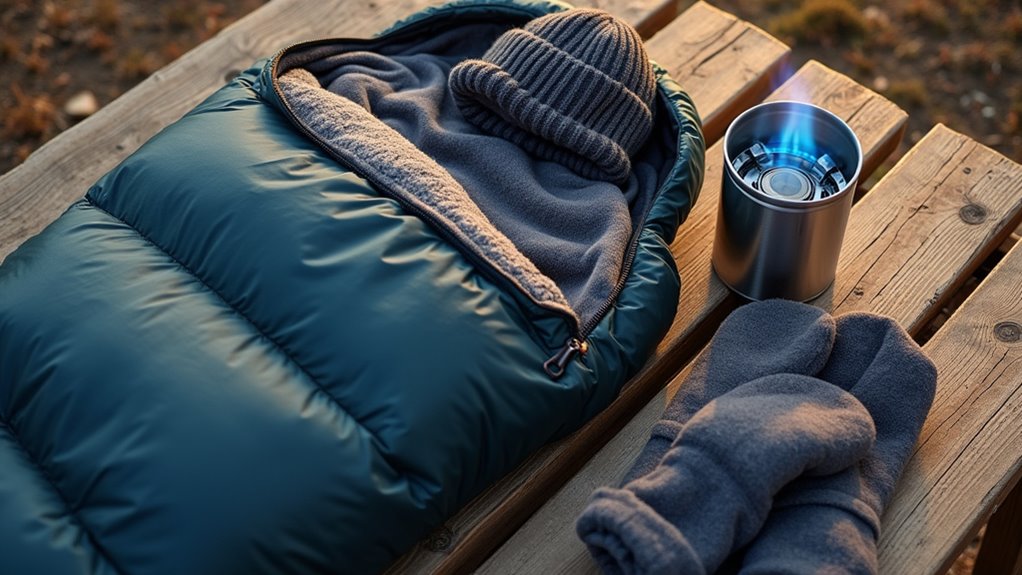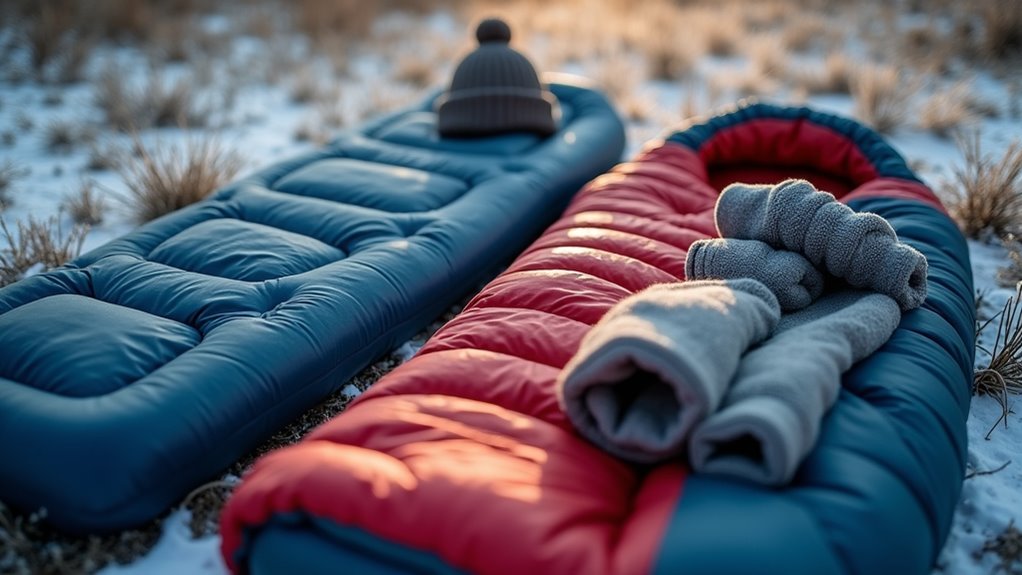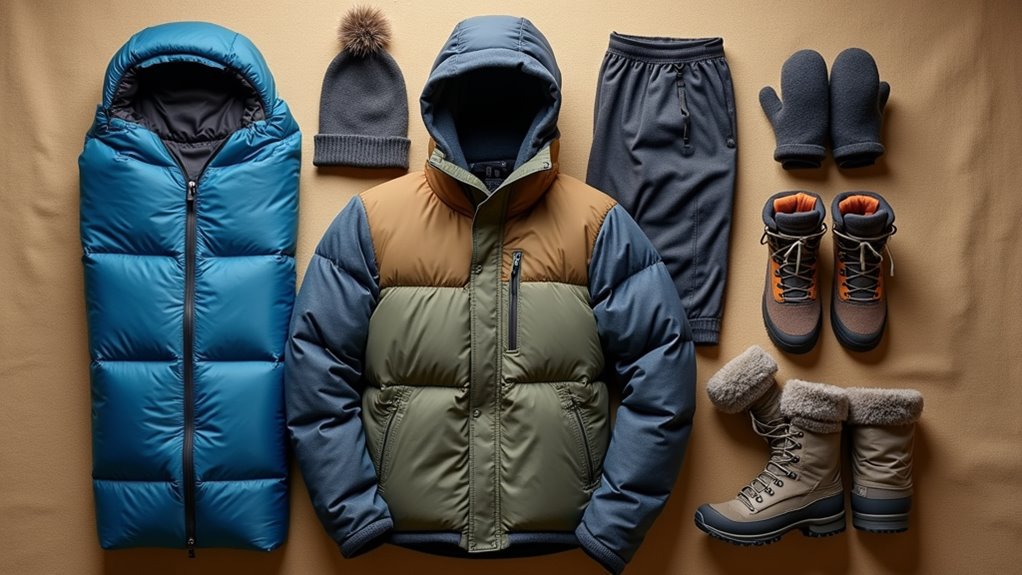Physical Address
304 North Cardinal St.
Dorchester Center, MA 02124
Physical Address
304 North Cardinal St.
Dorchester Center, MA 02124

Just when you think you've packed everything for camping, these essential warmth items could mean the difference between comfort and catastrophe.
Like early explorers who faced the harsh wilderness with only primitive gear, you’ll need smart strategies to stay warm during your camping adventures. You don’t have to break the bank buying expensive equipment, but you can’t afford to cut corners on the essentials either. The difference between a memorable trip and a miserable night often comes down to choosing the right combination of basic warmth items—and knowing which ones actually work when temperatures drop.

When temperatures drop below freezing, your sleeping system becomes your lifeline against hypothermia and a miserable night outdoors. You’ll need a sleeping bag rated at least 10-15 degrees below the expected temperature.
Down bags offer superior warmth-to-weight ratios but lose insulation when wet, while synthetic bags perform better in damp conditions and cost less.
Don’t skimp on your sleeping pad – it’s essential for preventing heat loss to the ground. Look for pads with R-values of 4 or higher for winter camping.
Closed-cell foam pads are budget-friendly and nearly indestructible, though less comfortable than inflatable options.
Add a sleeping bag liner to boost warmth by 5-15 degrees. Merino wool or silk liners work best and double as emergency shelter.
For those seeking an alternative to traditional tent camping, consider a hammock setup which can provide excellent insulation from the cold ground when paired with an underquilt.
Beyond your sleeping system, portable heaters and warmth devices can transform a frigid campsite into a comfortable basecamp. You’ll want safe, efficient options that won’t break your budget or compromise your tent’s ventilation.
Consider these practical heating solutions:
Always prioritize ventilation and carbon monoxide safety with any heating device. These heating solutions prove especially valuable when camping along challenging routes like Scotland’s West Highland Way, where weather conditions can change rapidly and warmth becomes essential for both comfort and safety.

While expensive gear gets all the attention, your clothing choices make the biggest difference in staying warm outdoors. You’ll want to master the three-layer system: base layer, insulating layer, and outer shell.
Start with moisture-wicking synthetic or merino wool base layers—cotton kills in cold conditions. Add an insulating middle layer like fleece or down that traps warm air. Top it off with a windproof, waterproof shell to block elements.
Don’t forget extremities—you’ll lose serious heat through your head, hands, and feet. Pack wool socks, insulated gloves, and a warm hat. Extra socks are vital since wet feet equal cold feet.
The beauty of layering? You can adjust as conditions change, removing or adding pieces to maintain comfort without overheating.
Even with the best layering system, you’ll want backup heat sources for emergencies or unexpectedly brutal conditions. These items can literally save your life when temperatures plummet beyond what you anticipated.
Essential Emergency Heat Sources:
Keep these items easily accessible in your pack. When hypothermia threatens, fumbling through gear isn’t an option. If you’re planning to camp in extreme cold conditions like those encountered on glacier climbing expeditions, having multiple backup heat sources becomes even more critical.
Think of staying warm while camping like building a fortress against the cold—you’ll need multiple layers of defense. Just like experienced mountaineer Joe Simpson survived sub-zero temperatures in the Andes with proper gear layering, you can conquer cold nights with the right combination of insulated sleeping systems, portable heaters, and emergency backup items. Don’t skimp on the essentials, but remember that smart layering often beats expensive single-solution gadgets every time.